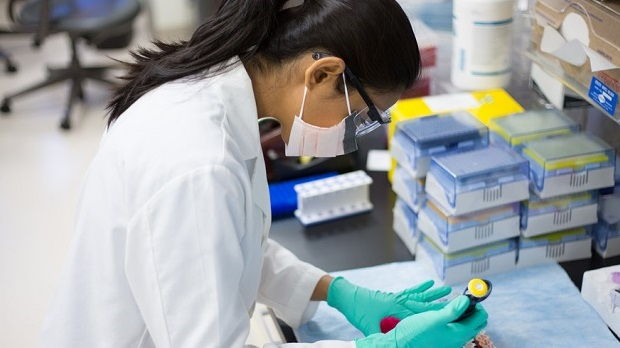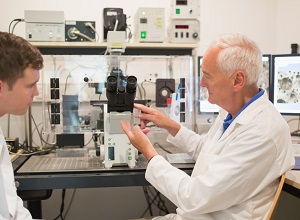Tips for tissue processing, fixation & sectioning

Washing tissue
If tissue is not to be used fresh it should be washed immediately then snap frozen or fixed. Snap freezing is not recommended if highly detailed tissue architecture is to be preserved. Tissue may be washed by submerging in phosphate buffered saline (PBS) at 4°C on ice. Change PBS every 5 minutes. Three changes is sufficient for most tissues but will depend on sample size and blood content.
Fixation
Fixation preserves tissue from decay. Most fixatives achieve this by stabilizing macromolecules by creating cross-linkages. One option for tissue fixation is 4% paraformaldehyde (PFA). To make 4% PFA add 1g of PFA powder for every 24mL of PBS. PFA powder should be handled in a fumehood. When handling 4% PFA solution safety eye glasses should be worn. (Store 4% PFA at 4°C). To fix tissue, completely submerge tissue in 4% PFA solution overnight with a ratio volume of 1:15 (tissue : PFA). Following fixation wash 2 – 3 times for 5 minutes in PBS at 4°C. Tissue is now ready to be frozen or embedded in paraffin etc.
Tissue blocks & sectioning
If freezing tissue for sectioning, tissue can first be cryo-protected (to minimise morphology distortion) by placing samples in 30% sucrose with PBS overnight at 4°C. Tissue-Tek O.C.T Compound is one option for freezing tissue into blocks being ideal due to its water soluable properties. Following cryo-sectioning, slides can simply be rinsed in PBS to remove the O.C.T compound. Paraffin embedding avoids morphology distortions caused by freezing, however paraffin sections require chemical treatment to remove the paraffin. Paraffin embedding & chemical treatment to remove paraffin may damage antigens creating difficulties for immuno-histochemical analyses. Paraffin sections work very well for H & E staining etc.














